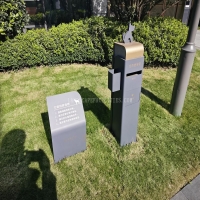Welcome to the website for landscape facilities products and knowledge.
How do landscape bar counters accommodate outdoor serving carts or mobile bars?
Integrating landscape bar counters with mobile serving solutions requires thoughtful design and strategic planning. Permanent outdoor bars built with weather-resistant materials like stainless steel or teak can be designed with extended countertops that create natural docking stations for mobile units. The key is incorporating standardized height measurements—typically 42 inches for standing bars—to ensure seamless alignment between stationary and mobile components.
Smart designers often include dedicated utility channels within permanent structures to accommodate power transfer for mobile refrigeration units and lighting systems. These channels may feature waterproof electrical outlets and USB ports positioned beneath countertop overhangs. For practical functionality, many landscape bars incorporate swing-out or slide-under sections that create temporary openings for cart integration without compromising structural integrity.
Material continuity plays a crucial role in visual integration. Using matching decking materials on both stationary counters and mobile units creates cohesive aesthetics even when elements are separated. Some advanced designs feature magnetic locking systems or retractable guide rails that help secure mobile bars during operation while allowing easy detachment for repositioning.
Drainage integration represents another critical consideration. Permanent bars designed for mobile companion units often include discreet drainage channels that can connect to carts' ice melt systems through quick-connect fittings. This prevents water accumulation around serving areas while maintaining full mobility.
For maximum versatility, many landscape bars now incorporate multi-level designs with lower sections specifically engineered to accommodate standard cart dimensions. These designs might feature removable panels that reveal preparation surfaces exactly matching the height of adjacent mobile units. Such configurations enable staff to use mobile carts as auxiliary workstations during peak service hours while maintaining a unified appearance.
Climate adaptability features include integrated storage for weather covers that match both permanent and mobile components. Some high-end installations even incorporate hidden tracks or recessed areas that allow entire mobile bars to be stored within larger permanent structures during inclement weather, protecting investments while maintaining aesthetic appeal year-round.
Related search:

Recommendation
Outdoor cat and dog feces trash can; Community pet trash can; Metal multi-color design